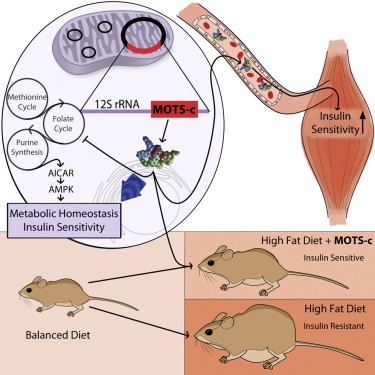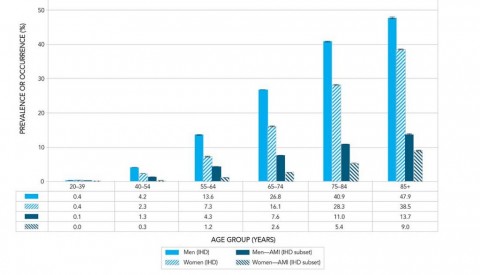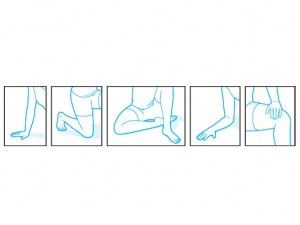When I think of longevity a couple of movies come to mind. Cocoon and The Curious Case of Benjamin Button cover this theme in different ways. Or a quick history lesson takes us back to Ponce de Leon and the search for the fountain of youth. Researchers at USC may have found the protein that confers anti-aging benefits. The protein is MOTS-c and is a mitochondrial protein. Mitochonria can thought of as the powerhouse of the cell and are responsible much of our cellular energy. MOTS-c acts by heping promote metabolism amd maintaining homeostasis. Previous research into MOTS-c has shown that it helps increase insulin sensitivty and reverse obesity in mice. In human when we exercise we see the level of MOTS-c is elevated almost 12x and remains elevated for up to four hours post-exercise. What the research team at USC did was inject MOTS-c into mice of various ages and then measure their speed and agility, among other things. For mice, young is considered 2 months old, 12 months is middle age and old is 22 months. The researchers injected the mice three times per week and had them perform a running test. The mice would warm-up for 5 minutes at 13 metres per minute. After five minutes the speed was increased one metre per minute for five minutes to reach 18 metres per minute. The mice then ran for up to 30 minutes at a top speed of 23 metres per minute. What they found is the older mice i.e. 22 months old, were able to keep up and outrun the young and middle aged mice. As well, the older mice were more sure-footed compared to the younger mice. This is encouraging and it appears MOTS-c may play a role in healthy aging. It helped with the metabolic fitness...
Does Exercise Need to be Vigorous?
- Chris Collins
- Fitness
- 1521 Hits
- 0 Comments
-
I remember going to a local business a few years back to give a corporate health presentation. And before the presentation I connected with someone I knew previously in the foyer. And catching up for a few minutes I excused myself in order to go get ready. The person I knew headed off in the opposite direction. I asked if they were going to attend. And here's what they said... 'No, I already do yoga regularly, so I'm good. But good luck with your talk'. I guess this would be similar to declining a presentation by a financial planner because you already have a bank account. Sure bank accounts and investing are both in the financial sector but that's about where the similarities end. Maybe to the average person physical fitness is all the same. Whether you want to do yoga, Pilates or strength training, they are all equivalent and offer the same benefits. New research says this isn't so. A new study published in the Journal of American Medical Association (JAMA) looked a the effects of exercise on lowering disease and extending lifespan. On a side note I like how our friend Sam Spinelli uses the term 'healthspan' rather than 'lifestyle'. Anyways, the authors of the study reviewed over 400,000 people, evenly split as male and female with an average age of 42 over a period from 1997-2013. The participants would then self report the duration and intensity of their daily exercise. They wanted to see the difference of moderate and vigorous exercise on all cause mortality. In other words, when you push hard with your exercise how does this compare to less intense exercise on death due to cardiovascular disease (CVD) or cancer. Exercise intensity can be defined as to how much energy it burns compared to sitting at...
12 Minutes of Exercise Improves Health
- Chris Collins
- Fitness
- 1505 Hits
- 0 Comments
-
This summer we got a puppy. And the interesting thing about puppies is that they don't really have a concept of time. I could come in at the end of the day and the puppy is excited to see me, wagging her tail and weaving in between my legs for contact and comfort. The same reaction could happen if I'm working in another room for a bit and rejoin the puppy and family wherever they are. The puppy doesn't distinguish between an 8 hour or a 20 minute absence. Our kids are a little smarter than the dog, although sometimes I wonder? And they have a slightly better concept of time. But they will still ask to go outside and play with their friends minutes before we're due to head out the door for a family function. Or after pajamas and brushing their teeth they'll ask if we can start a movie. But puppies and kids can be excused if they don't know time or how long things should take. Adults however know what an hour is, how long things take and how to manage their day. When it comes to exercise a common challenge is making the time to be active. We might assume that for a health goal to be realized requires a certain amount of daily fitness to achieve it. Intuitively I would guess most people think they need to exercise an hour a day. Now there's nothing wrong with training an hour daily. And if you're already in the habit than definitely keep going. But for those that aren't that active and haven't gotten started yet because they haven't carved out those 60 minutes per day, a new study should give them hope. The study was part of the Framingham Health Study and included over 400 participants....
What Happens When You Age Without Exercise
- Chris Collins
- Fitness
- 1972 Hits
- 0 Comments
-
Have you ever watched kids play? It's usually unstructured, all out and fun. For example, watch a 3 or 4 year old at a playground and they run from one play structure to the next. They don't walk from the slide to the swing, they run. And it's not to because they are in competition with someone else. There could be no other kids at the park and they'll still run. Puppies are the same way. I've started taking our puppy, Poppy, on some hikes and walks. And every now and again she'll open up into a sprint until she gasses herself and has to stop and rest. Once she recovers she's off again chasing a butterfly, racing me or for any reason at all. At some point in life exercise changes. Maybe it's because we think everything has to be by the rules or it doesn't count. For example, you can't just do push ups you need to do 3 sets of 10. And runs need to be a certain time or distance. Maybe we stop exercising because it doesn't feel like play. We don't get to do the fun things we did as kids. Whatever the reasons for not exercising the consequences of not exercising as we age are very real. A recent article covered this in more detail. Here's a brief recap of what happens to your body if you don't exercise as you age. Sleep Issues - Do you have an elderly parent? Or maybe you work with elderly people. If so, you'd know it's not uncommon for them to have poor quality sleep. This can be due to waking up during the night for the bathroom, to not being able to relax or difficulty getting in a comfortable position. Regardless of the reason, it is rare...
Quick Longevity Tests
- Chris Collins
- Fitness
- Training
- Injury Prevention
- 1757 Hits
- 0 Comments
-
If you're a fan of movies you may remember a film called In Time with Justin Timberlake. The premise was that everyone had a digital clock displayed on their forearms telling how much time they had left in their life. As a result, time rather than money, because a highly valuable commodity.Now I'm not suggesting we should all know how long we're going to live. But we all probably all want to live full and complete lives. And part of that involves being in the best physical condition possible. Typically we can go to the doctor and have a number of tests performed which give an indication of whether we are doing better or worse than the average person in terms of life expectancy. But there are also some tests you can do yourself either at home or wherever you do your fitness training. Each will give feedback as to where you stand in terms of your longevity. Below are three quick tests you can try. If you are not already physically active you should pass on trying the third test. Special thanks to Dan John and Dr. Susan Kleiner for sharing these tests with me. Test #1 - Sitting Rising Test (SRT)This test came about when a Brazilian physician noticed many of his patients health deteriorated when they had difficulty bending down to pick something off the floor. To do the test start in a standing position and lower yourself to sitting on the ground using as few points of support as possible try. Then return to a full standing position. Start with a score of 10 and subtract 1 for every point of support needed to get up or down. Use the image below as a guide and count one for every one of the positions you used to lower...


